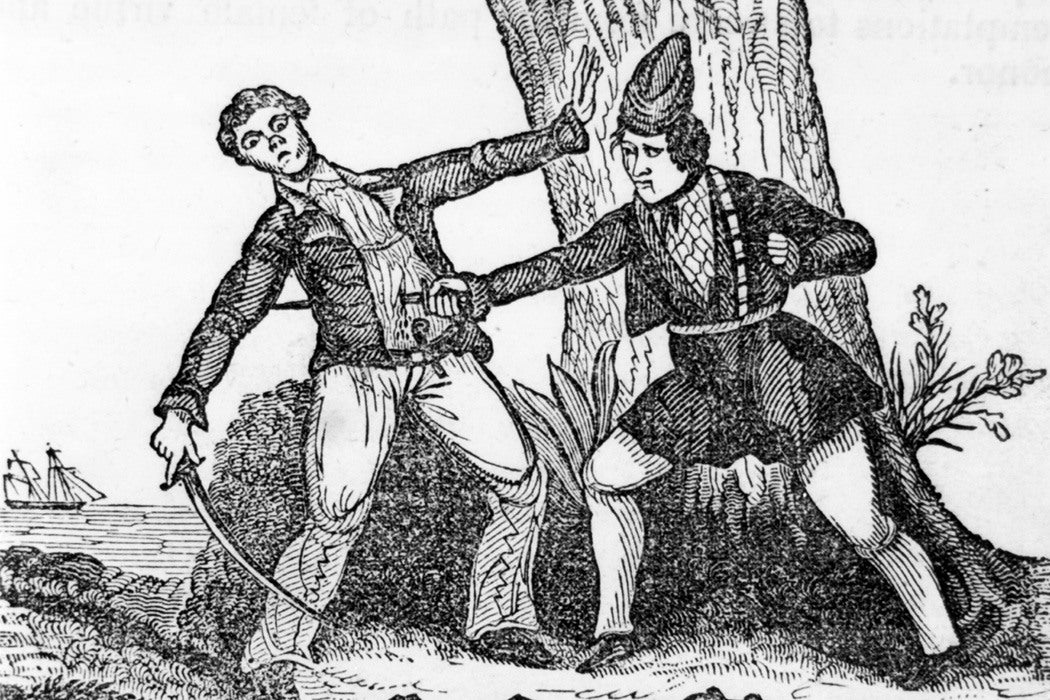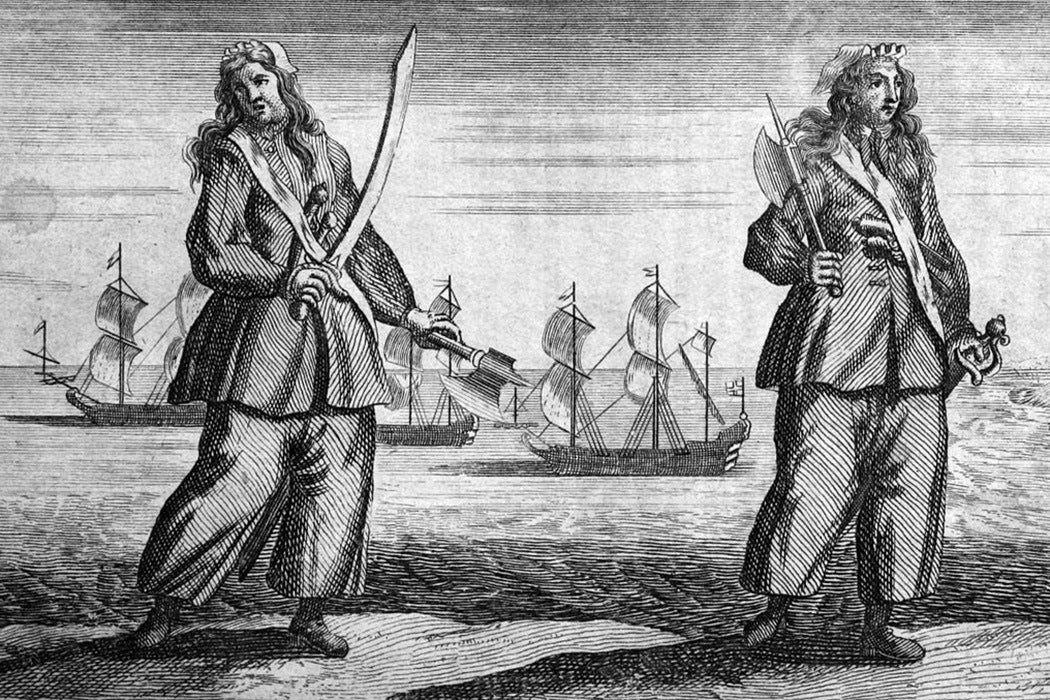How many real-life pirates can you name? While Captain Kidd or Blackbeard might come immediately to mind, names like Anne Bonny and Mary Read probably don’t. But as noted historian Marcus Rediker writes, they were just a few of the many women who sailed the seven seas disguised as men.
These women pirates have been almost completely obscured by the lore that surrounds their male counterparts. But they weren’t that uncommon: Marcus writes that women pirates “were not entirely unusual cases” and that they were part of “a deeply rooted underground tradition of female cross-dressing, pan-European in its dimensions but particularly strong in modern England, the Netherlands, and Germany.”
This tradition hinged on women with nothing to lose: people so marginalized and forgotten that all was opportunity. Women dressed as men to escape poverty and follow adventure on land, and women like Bonny and Read did it at sea.
There were major obstacles to women going to sea, even under the auspices of legitimate expeditions. Women were forbidden from serving as crew members on vessels that presented major physical challenges to men; they were also considered “inimical to work and social order” on a ship. In other words, the mere fact of their femininity was thought to be capable of bringing mutiny and bad luck to a ship’s crew. Even pirates, who rejected the seafaring mainstream in favor of profit, believed that women would ruin their raids and foment discord among their crews.

Pirate women simply dressed in men’s clothing and joined crews anyway. They proved their worth through their wits, guts, and contributions. They had to be swifter, smarter, and even braver than their counterparts—and to cuss, fight, and kill with the best of them. Bonny, a feisty Irishwoman, shot other crew members she considered to be cowardly when they chickened out during a raid. And Mary Read, an Englishwoman with a taste for adventure, challenged a lover’s enemy to a duel and killed him before he could fight her boyfriend.
Once a Week
Both Read and Bonny revealed their identities to their crews at some point and wore women’s clothing at times, “evidence of the acceptance they won, despite their gender.” They also claimed the privilege of their sex when they were tried for piracy, claiming that they were pregnant and evading punishment. But it is unclear how many other women were never discovered.
We may never know how many women were pirates—and we certainly weren’t ever meant to find out. These women “added an entirely new dimension to the subversive appeal of piracy by seizing what was regarded as ‘male liberty.’” In a way, they were performing the ultimate act of piracy by simply going out and taking what they considered to be rightfully theirs.







